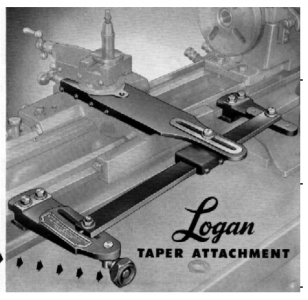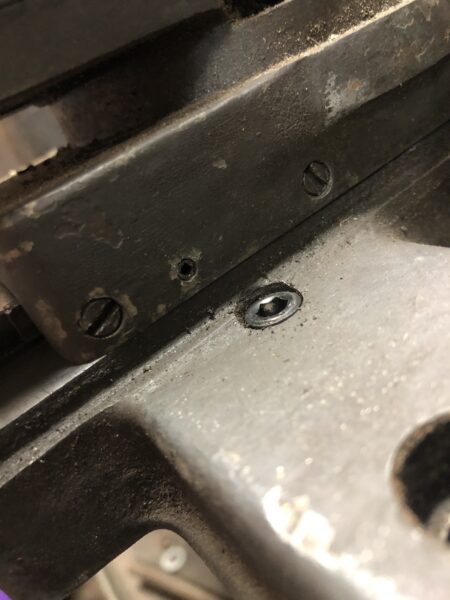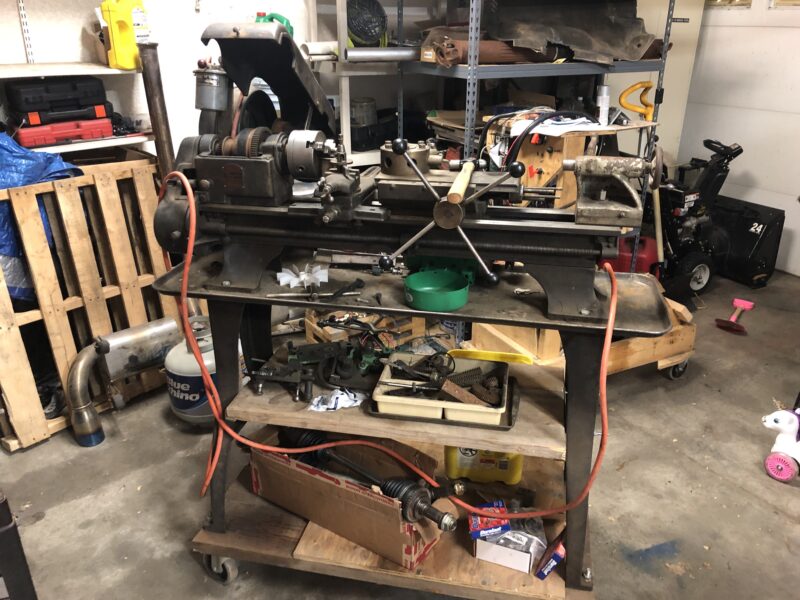wa5cab,
Thanks for your input. I'm sure there's a better solution than the 2HP motor that came with, I've spotted several treadmills locally for free. I may also reach out to a couple of vendors I work with. I know a three phase inverter-rated motor with even just 100:1 turndown can happily run at 1/100th of its base speed. So a 1750rpm motor can run at 17.5rpm all day. 1000:1 motors are also available that can turn 1.75rpm without overheating. Things can get pricey quickly, though.
I ran some numbers on this for fun. I built a little Excel sheet based on the reductions published in the manual. I can plug in a motor input speed, select my reductions, and it will spit out the resulting spindle speed.

Here it is with motor belt position 1, spindle belt position 3, and the back gear disabled, the result is 179 rpm just like the table shows:
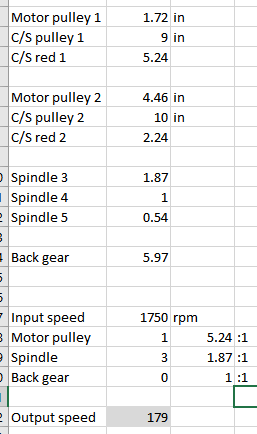
Now if I eliminate the countershaft reduction by changing that value to 1:1, I can see how slow a variable speed motor would have to run to achieve the factory minimum speed of 30rpm.
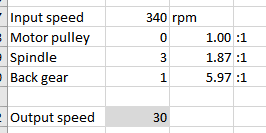
So a motor speed of 340 rpm directly into the spindle using the reduction of the #3 spindle pulley position plus the back gear gets me 30rpm at the spindle output. That's roughly 20% of a 1750rpm rated speed motor, or 12Hz on a 60Hz motor. That's only a 5:1 turndown and very liveable for basically any inverter-rated AC motor.
But what about torque? The advantage of the big primary reduction is an increase in torque at the spindle. The specified 1/2HP motor, after all of the reduction, sees about a 58x increase in torque. If you eliminate the primary reduction, you only see an 11x increase in torque. So if you tried to drive the machine with a 0.5HP motor, you'd end up with way less torque at the chuck given the same spindle speed.
Upping to a 2.5HP motor would give you (essentially) the same torque at the chuck as the 0.5HP motor through the primary reduction.
But if you're tied to just the #3 spindle pulley position, then spinning at the rated motor speed of 1750rpm only gives you a max of 936rpm, far less than the factory max of 1450. But it's possible to run higher than the nameplate speed, and running that motor at 2700rpm would achieve the factory 1450rpm spindle speed.
Here's a motor that looks pretty decent:
It's 2HP and will run from 176 to 2700rpm.
This is all just a thought exercise until I get a little further into the mechanicals, but it was fun nonetheless.



